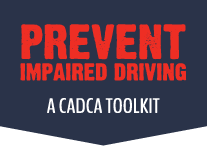Eagle River Youth Coalition: Case Study for Developing a Comprehensive Plan to Reduce Impaired Driving
By Samuel Gaber
Since 2001, Eagle River Youth Coalition (ERYC) has aimed to serve the needs of Eagle County, Colorado in the fight against substance abuse. The coalition has worked to maintain and improve health outlets, as well as create positive change by promoting the assets of youth and raising their levels of self-esteem.
To analyze the current status of young people in the community, EYRC conducted the Youth National Outcomes Measures Survey and gathered personal / peer-impaired driving data from the last 30 days-of-use. The goal was to use this evidence-based approach to assess and identify possible problems. This 2014 survey found that 53 percent of the youth surveyed (464 people) reported that they were alcohol users and 73 percent said they were marijuana users. The report also showed that 60 percent of respondents believed that employee drug and alcohol-testing were not deterrents for substance use and misuse.
ERYC determined that there were a number of factors which impacted underage drinking and impaired driving in their community. Among them were: alcohol outlet employees’ attitudes about selling products to underage drivers; access to public transportation; community norms concerning substance use and impaired driving; false perceptions about impaired driving; and identification by local law enforcement of a person driving under the influence. In addition, other factors which had an impact on drinking and impaired driving were geography and urbanization, as reported by the National Highway Traffic Safety Administration (NHTSA) (Goodwin et al., 2015).
The Eagle River Youth Coalition worked closely with the Gore River Task Force. The Task Force, which is made up of community members, law enforcement, and public health experts, is dedicated to addressing impaired driving in Eagle County. Together, these two organizations educate the public and develop a multifaceted approach to prevent impaired driving in the community. They helped close informational gaps among community members and youth and focused on improving local law enforcement deterrent practices. ERYC provided informational resources and training opportunities using CADCA’s Seven Steps to Community Change strategies.
One such strategy was to enhance the knowledge about the dangers of drinking and driving, tobacco and drug use among middle and high school students through two trainings entitled, Project Alert and Project Words No Drug Abuse. They were part of in-school prevention and education programs. Both trainings built a strong foundation of awareness among the youth in the community, which was reflected in the decreased number of young people driving under the influence in Eagle County, which went from 13 percent to 9 percent over a five-year period.
Another strategy for ERYC was to reach out to the Hispanic community by translating a variety of educational materials into Spanish. Attention focused on marijuana laws, as well as on other general impaired driving information.
Thanks to the support of EYRC’s law enforcement partners, deterrence measures have also become a valid intervention strategy. ERYC certified 80 percent of local officers as Drug Recognition Experts within the community. This training provided them with the appropriate knowledge to recognize drug impaired behavior and apply this training through the creation of sobriety check points. The enforcement efforts led to 463 DUI offender arrests in 2014, compared with 384 in 2009. This preemptive strategy had an extremely positive impact in the community, including having only two DUI fatalities in 2014. Many of these strategies fall in line with NHTSA’s Countermeasures That Work: A Highway Safety Countermeasure Guide for State Highway Safety Offices as significant influences on reducing impaired driving on the local level (Goodwin et al., 2015).
ERYC has used a comprehensive approach to change the social norms surrounding the behavior of impaired driving, as well as to improve knowledge about substance use and misuse, enabling local law enforcement officers to effectively identify risk possibilities and thereby prevent fatalities. These successes indicate how impaired driving can be adequately assessed and addressed to yield a positive change in healthy behavior, which can be replicated in other communities as well.
For more information regarding Eagle River Youth Coalition’s work, please visit http://eagleyouth.org/index.php/main.
Reference
Goodwin, A., Thomas, L., Kirley, B., Hall, W., O’Brien, N., & Hill, K. (2015).
Countermeasures that work: A highway safety countermeasure guide for State highway
safety offices, Eighth edition. (Report No. DOT HS 812 202). Washington, DC: National
Highway Traffic Safety Administration.

